#especially ones with customizable PCs
Explore tagged Tumblr posts
Note
Random but do you play any other like dating sims? I'm getting back into Tears of Themis again after like so long and I was wondering whether Artem Wing would be your type
— 🦋
i actually tried to get into Tears of Themis! specifcally because Artem looked like You Know Who. i didn't get very far into it (gachas don't appeal to me anymore, don't ask me how much i've spent on Genshin Impact) but i was actually surprised how much i ended up like Vyn. never found out what his deal was but i love evil scientist archetypes lmao. another issue i had with the game was that Luke and Marius had absolutely no appeal to me; at least in Mysme, charas i'm not romantically inclined towards like Yoosung and Luciel still interested me because they were fun and complex characters beyond their attractiveness and "fix me" suffering. maybe it was because i never got past a certain point in the game, but those two from ToT just never grabbed my interest : \
as for any other otome games i like........
there's a promising one in development rn that i've been following since it blew up on twitter a few months ago called Touchstarved. it seems very promising and has a lot of fantasy monsters and magics and stuff, plus the art is FANTASTIC. you can actually check out their official account here @redspringstudio
another one i love of course is Ebon Light which you can download and play completely FOR FREE on itch.io, really great dark fantasy world and a slew of not!drows to romance
as for what i'm playing right now........if you're underage stop reading
rn i'm playing DoL, it's basically a porn game that includes a BUNCH of really dark topics. like, even if you don't have triggers, look up the triggers for this game, it is not for those with weak stomachs. that said, all the sex scenes aside, it does have romance interests in it you can date, a compelling plot, as well as a staggering amount of player agency to do with what you will in the town and surrounding forest/land/ocean. again, do you're research before picking this game up or you will be in for a bad time
#i am always on the hunt for new otome games#especially ones with customizable PCs#i will go through the trenches for them#as my last rec proves lol#they exist#anon#Anonymous
5 notes
·
View notes
Text
I'm just remembering Awakening now and how they let you play as either the HoF or as a veteran Orlesian Warden if your HoF died in the ending. I think most people chose to save their HoF for obvious reasons but I thought the idea was an interesting one if we're talking about making the sequel to a game that is meant to draw in both new and old players.
Since they were already thinking about the next game before Trespasser shipped, I wonder if it would have been feasible to make a version of Trespasser where the Inquisitor can straight up die as a result of their choices. Like if you use the anchor too much so that it consumes you without giving you time to be saved, or (more likely) if you antagonize Solas and it leads to him killing you, or you simply refuse his help because you don't want to give him the Anchor, or something like that.
And if that happens, the Inquisition is absorbed into the Chantry and would be functionally the same as the "didn't disband the Inquisition" worldstate. The Rook of that game would be the person the Divine sends after Solas as a new character (and what kind of relationship Rook has to the Chantry could have been the basis for your backgrounds, and could borrow from dialogue where the Inquisitor allowed the Chantry to take custody of the organization since the Inquisitor can also theoretically feel whatever way about the Chantry and its new Divine.)
Presumably new players would be expected to play as Rook and get to form a familiarity with the setting... without the baggage of playing a character with a game's worth of backstory and relationships they didn't establish.
This would presumably also have a lot of nods to the Inquisitor's impact on Thedas and their death. That could appeal to players who got their Inky killed off and wanted to see the drama of that, while also potentially persuading new players to go to Inquisition and see what they missed.
Meanwhile the Inquisitor if they'd survived would go after Solas either in the name of the Inquisition or (like Rook) in the name of the Chantry that absorbed it. Returning players would get to play as the character they got attached to in Inquisition, and feel the satisfaction of completing that narrative with the same familiar face.
Now, I know the reactivity required of having two different highly customizable characters in a sequel with major returning characters, on top of the other worldstate decisions, would have been INSANE (though I think the Inquisitor and Rook could have shared a lot of the same dialogue options, with "special" dialogue and tweaked lines for each worldstate.) Especially as it would have required having eight voice actors for the lead role alone. So I get that even this would probably not have been feasible, but like
Maybe in a world where the budget and time that went into Veilguard was actually spent on one game.
#I definitely understand the take that the fourth entry maybe didn't need to appeal to new players at all#especially as it was a sequel not a fresh new narrative#but I just think this could have been Neat#and I mean#bg3 lets you have a campaign as a customizable character or one of multiple companions with predetermined backstories#the fact that bioware has their PCs be voice acted is really the only obstacle I can see making this harder#veilguard critical#it's not really a critique it's just something I personally would have liked#but it borders critical talking points I guess
12 notes
·
View notes
Text
A Brief Look into "Ten no Oshigoto"
So, a while ago, anon asked me if I knew anything about a game of Kumazaki Shinya's (general director of the Kirby series) called "Heaven's Work" or "Ten no Oshigoto."
While anon didn't give themselves a clearer identity in their followup, simply wrote to let me know that they had sent in some helpful information before (thanks for that btw!) they and another returned with links to a Japanese Youtube Let's Play by Ochanaito that allowed me a greater look into just what this game actually was!
(Also thanks to Papen for their NOTE post who I also sourced heavily for this)

So, many of you may be familiar with the RPG Maker series of games. While most of the popular entries have come out in English, Japan had many more of these games come out, including a few entries for the Playstation 1! Given the highly customizable nature of the PC ones, you might think that making a big custom game on the Playstation would be very difficult...and you'd be right!

(One of the classic dev tricks of the older entries was to make a custom menu by building a map that LOOKED enough like a menu and turning the protagonist into a cursor who teleported from location to location. It was actually super clever!)
"Ten no Oshigoto" was an RPG Maker 3 game created by Kumazaki when he was 20 years old, 3 years before he would enter HAL Labs as a designer. It was not the first independent game he tried to make. In fact, it was the 2nd game out of 4 (?) he had a part in creating! What distinguishes "Ten no Oshigoto" (outside of the fact that it filled up a STAGGERING 13 memory cards worth of data in a time where most other games took 3-4) is that it actually won an award!!
See, another thing that distinguishes the Japanese and English RPG Maker communities is that parent company ASCII often had competitions and gave out prizes to the best RPG Maker games of that season/year! A few of those games that won, ASCII would even go on to assist in porting to and publish on consoles, like the PS game "Palette." Now, the prize Kumazaki's "Ten no Oshigoto" won is listed as simple a "consolation" prize, so it obviously wasn't on the fast track to publishing, but it was enough to draw some eyes to it!
(As for the English side of things, well, the RPG Maker community, and even the "Maker" part of the title came entirely out of the Russian pirate/hacker scene, with several of the engines being mass distributed illegally and many of the non-JP "classics" being made on pirate copies of 2000/2003 before it was finally licensed in English - explaining why we never had contests and cash prizes. In fact, it took a while to work some of the piratical tendencies out of its larger user base ^^ Sadly, EN RPG Maker has now gone full late-stage capitalist: while the Japanese community *still* frequently produces free resources, including art, music, and scripts, the EN community, thanks to a few high profile folks setting the bar with payments for everything, has developed a culture of asking people to pay nearly as much or more for add-on scripts than the actual engine itself costs I'm not salty la la la)
AHEM!!
So, what IS "Ten no Oshigoto?"
Well, I didn't watch through the whole 20 video series (not yet) just far enough to get a feel for the basic game play loop, and I have to say, while it's terribly silly (!!) it is also a dastardly impressive game, especially knowing the tools Kumazaki had to work with!

The story of "Ten no Oshigoto" has you playing a god named "Ten" (His name means "Heaven," haha!) who is the young, lazy, unaccomplished son of Zeus, king of the gods!

The angelic Ten spends his days tinkering with robots (there is a joke where he says that all that's left is to paint the monitor with mustard, turning it a gold color, before he is surprised, bumps it and the robot explodes fantastically; a bizarre, comical little scene that is repeated almost word for work with the king of the bad guys later on!)
He is called to see his father by this weird little flying hippo/angel/kirby thing that serves as your companion throughout the rest of the adventure named... "Hengel?" "Hangel?" "Engel?" something, and told that he's finally being given a planet of his own to be god over! He just has to clear it of the "Waruma" ("Evilies") and plant the seeds of humanity to really get the planet started!

Not too long after that, Ten meets another strange companion, "Sebas-chan" (a pun on "Sebastian?") another god who looks like a naked man wearing a lime-green full body spandex suit. Like I said. The game is...terribly silly. It is fully of goofy dialogue, with most of the gods and monsters talking in silly regional accents and characters' priorities being all over the place. Ten himself is a bit lazy and at times a coward, but he does pull through when needed!
What's truly impressive about the game is how it is put together. You see, it's something of an action game, and I want everyone to know, while it's not unusual for clever folks to use RPG Maker as a shell to create all kinds of games now, making an action game in RPG Maker 3?! That's a huge challenge. And even then, you can definitely see the seams in "Ten no Oshigoto." When you encounter an enemy, you can walk up to it and unleash a weak physical attack, trading blows.
However as you start off with only 3 Hearts, this is not recommended. Instead, these glyphs show up on random places on the map that charge up Ten's magic and allow him to use a more devastating magic attack or heal himself! So, battle is a mix of keep-away and hide-and-seek till you can gather the power you need.

One of the first boss battles puts you up against a reaper Waruma who splits into three! You have to attack the main body to do any damage. Staying close and keeping track of which is which leaves you vulnerable to his powerful "Tri-Attack" which can instantly bring you down to 1 Heart! While running all over looking for glyphs means you're liable to lose track of which one to use your single attack on!

It's all quite clever! There's a simple location-based map and I have to say, the scene right after meeting Sebas-chan where he takes you to this oddly high-tech sci-fi observatory station and shows you the various locations where you'll need to purge Waruma with the big bad King Waruma on screen gave me MASSIVE flashbacks to Return to Dream Land and looking for the Starcutter's parts!!

(Tell me if you've seen this before! ...O-Okay, maybe not like THIS but...)
I didn't get far enough into the LP to see if there are any of the cosmic/body horror chops we know Kumazaki for. This game really seems to play more to his sense of cheesy non-sense humor, at least so far! (Of course, he was just 20 when he made it) but even if it's silly, "Ten no Oshigoto" is clearly made with a lot of love!

TLDR, if I were in charge of HAL Labs back then and I saw what he'd been able to do in just this one game? I'd have hired him as a designer on the spot, no question! He's clearly a fitting successor to Sakurai, and even his old indie game work demonstrates that imo!
-
All that said, I don't have much else to add about "Ten no Oshigoto" at the moment. I suppose if I ever get around to finishing Ochanaito's Let's Play, I might come back to this post if I can think of more that I feel expands on the positive picture this has painted of him so far.
Altogether, I *do* think that this is an interesting piece of Kumazaki's (and to a lesser but not irrelevant degree) the Kirby series' history! It's not often we get to see the things our favorite directors made during their early forays into the "work" of creation! ^_-
29 notes
·
View notes
Text
So I recently saw a demo video for an upcoming mech-action game ‘Mecha Break’, which if you haven’t heard of it, looks like basically ‘Armored Core, now with hilariously blatant and obvious waifu bait’ in the form of sexy bombshell pilot player-characters that you can customize and have strut sexily around a hub-world between missions.
The thing is though, I can’t help but think there is something very interesting and honestly FUN about the idea of a mech game with a customizable Pilot-PC and a hub-world that you can explore ‘on-foot’ between missions. That just feels like something that would add so much fun immersion into a game like this.
Like the general rule of mech-games is that you are always essentially playing as the mech, and nothing else. With everything else like mech-customization and mission selection being done purely through menu-interfaces.
But with an actual Pilot-PC and an explorable hub-level, I feel like things get a lot more INTERESTING. Like now you can have fun with incorporating all those menus diagetically into the hub-world. Like actually going to the hanger to build and customize your mech, going to a shop to purchase new equipment, and of course the opportunity for plenty of RPG elements like chatting with other characters, finding items, reading documents and just simple exploration. And even some especially fun and egregious stuff like actually going through the full process of prepping and boarding your mech and going through the entire launch sequence before a mission.
And I can’t help but feel like that makes things at least a bit more fun and engaging overall? Sure it’s all so much ‘fluff’ and the dreaded word ‘filler’, but you know what? I think having some fluff and filler is a GOOD THING.
Honestly I feel like this is probably the one thing I really wish we’d gotten in Armored Core 6. Like yes, I know there is a Watsonian excuse for why you can’t have a Pilot-PC, but that game was made in the same engine as Elden Ring, Sekiro, Dark Souls and basically all of FromSofts other games. Would it really have been so hard to port over the PC assets from Elden Ring to make Pilot-PCs and a Firelink/Roundtable Hold-esque hub-world to hang out in and explore between missions?
Now sure, I realize that this level of immersion in a mech game wouldn’t be for everyone. Some people prefer the streamlined, simplified ‘go through some menus then play missions’ framework. But I also feel like this would be easy enough to accommodate for by having an option to easily access all of the between-mission menus and interfaces without running around the hubworld? Like say your PCs quarters in/aboard the homebase/spaceship/carrier/etc has an interface that lets them/you ‘remotely’ access all the mech-customization, parts-purchasing, mission-selection, etc. and skip the immersive fluff if you wish.
(Though perhaps with the caveat that if you do this too much, your character develops a reputation for being reclusive, anti-social shut-in which has potential consequences for the story XD)
I even think there’s a lot potential in the concept of a customizable Pilot-PC alone, aside from just being a sexy waifu. Like one game that actually did some REALLY interesting stuff with this concept was DAEMON X MACHINA from a few years back. That game not only gave you a customizable Pilot Player Character, it actually gave the customizations tangible effects on gameplay in the form of your character being able to get various cybernetic augmentations through a skill tree that gave different bonus’s to your piloting ability as you gradually turn your character into a full cyborg over the course of a playthrough.
I think we all understand value of a good hub-level in video games, particularly games that are very mission-based (shoutout to Hitman WoA’s Freelancer-mode Safehouse), and I think there’s a lot of there for the mecha-action genre.
#rambling#rambling about games#video game mechanics#mech games#armored core 6#daemon x machina#would definitely like to hear if anyone else knows of other mech games that have pilot-pcs XD#btw gratuitous waifus aside mecha break might be best avoided#as it sounds like the publishers are trying to push some pretty skeevy micotransaction bullshit in it
50 notes
·
View notes
Text
I’ve come across confusion with how Fabula Ultima’s character creation works, especially in people coming to it from DnD5e, so here’s a post to break it down and show how awesomely customizable FabUlt PCs are straight from the hop.
In 5e, pretty much everything about your class is decided immediately. Take it at level 1, it drip-feeds you the same features in the same order. At 1st - 3rd level, you pick a subclass from a short list, and this sprinkles in a few more set-in-stone upgrades. A Level 10 Champion Fighter will have all the same class features as every other Level 10 Champion Fighter. If you multiclass, you get to add in some other features, but always the same features in the same order for every class you do this with.
In Fabula Ultima, each Class is a bundle of features called Class Skills, and in most cases these Skills can be taken in any order and as much or as little as you like. Each level your character has represents such an investment in a chosen Skill in a Class that you have. (There’s an example of all this later that makes it clearer.) Some Class Skills are one-and-done -- spend a level on it and it’s yours. Others Skills have multiple tiers to them, allowing you invest multiple character levels into them to make them more powerful. (Each class also has couple of Free Benefits, little boosts you get for having at least one level in a class.) You can also skip a class skill altogether, if it isn’t something you want for your character build.
Looking at each class, they seem a little barebones. Only five Class Skills, not a lot, and each class is kind of niche. The Rogue doesn’t get martial ranged weapons, and the Entropist's only damage spells deal Dark damage. But you see, in Fabula Ultima, multiclassing is mandatory. At character creation, you get 5 levels and you must invest them in two to three different classes, in any of the skills available from those classes. This does two very important things. One, it ensures a character is good in at least two ways straight out of character creation. Two, when combined with the previous point -- that class features can be taken in any order and arrangement -- it creates this unprecedented level of variety, including with starting-level characters.
Like okay, as an example of all this, I’m going to make two builds for starting characters. They’ll have the same number of levels in the same two classes (Guardian 2 / Weaponmaster 3), and not only will they not step on each other’s toes, they’ll play completely differently.
Our first character is going to be a teamwork-oriented tank, focusing defensive support and enemy debuff. The combined Free Benefits of Guardian and Weaponmaster grant +10 max HP, plus martial armor, shields and melee weapons. From Guardian, we’ll take Protect so we can jump in the way of attacks and spells aimed at our allies. We’ll also take Dual Shieldbearer, to give us some insane Defense scores and let us dual-wield those shields as brawling weapons. Now for Weaponmaster. First we’ll grab Counterattack. This grants us a 50% chance to hit back at enemies when they attack us with melee, including the attacks we block with Protect. And we’ll invest our last two levels in Bonecrusher, so we can choose to swap out damage with status effects and MP drain (lots of it because we invested 2 levels) when we hit. Guardian 2 / Weaponmaster 3 who’s tanky as hell, can intercept and punish enemy attacks, and debuffs enemies with shield bashes.
Okay, same Guardian 2 / Weaponmaster 3 spread, same Free Benefits. However, instead of a tank this character is a simple but reliable damage-dealer. From Guardian, we’ll take one level in Defensive Mastery and one level in Fortress. These skills give us a bit of damage reduction and a bit of extra max HP, respectively, and we’ll probably level these up over taking new Guardian skills in the future. As cool as it is, Dual Shieldbearer won’t work for this build since we’ll use a two-handed weapon like a Katana or a Waraxe for bigger damage. From Weaponmaster, we’ll invest in Bladestorm and two levels in Melee Weapon Mastery. Bladestorm lets us spend MP to hit multiple targets when we attack, and the two levels of MWM give us a +2 on our melee attack checks. Guardian 2 / Weaponmaster 3 who’s got a little padding as protection while they focus on accuracy, damage, and hitting multiple targets at once.
So there you go. Same classes, same number of levels in each, completely different playstyles. And these are just starting characters. PCs gain a level every session or two, and they can invest in up to three classes at once (and 5-6 classes over a level 5-50 career). On leveling up, the tank could double down on Guardian to get even tankier, or level into Orator or Spiritist for more support options. The damage dealer could lean into Fury for increased crit chance and bonus damage, or into a magic-hybrid spellblade build via Elementalist. Or either of them could take on Wayfarer for an animal companion and increased travel/exploration aptitude. The possibilites are truly amazing, and you can get super creative with them as you find synergies and build up team combos. And I didn’t even get into Quirks, custom weapons or Heroic Skills.
So yeah, if you haven’t yet, check out Fabula Ultima. Character building is insanely fun and it’s honestly spoiled the 5e equivalent for me.
66 notes
·
View notes
Text
how to play pokemon games to study japanese
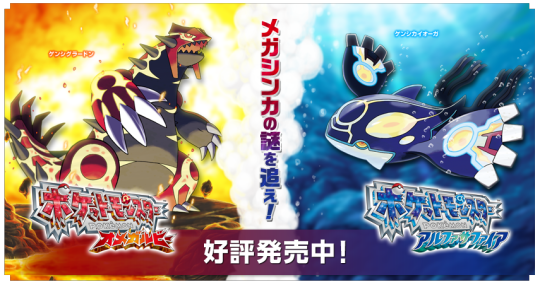
I just started playing pokemon omega ruby in japanese and have been having a great time with it! The language has been surprisingly simple so far, and I've found it a lot easier to get into than animal crossing. I used a few different resources, so here's a guide on how you can play pokemon in Japanese for language learning:
Choosing a pokemon game
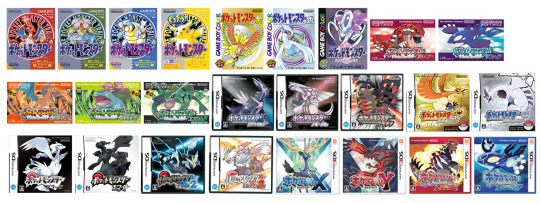
I used this video from gamegengo to decide which game to play and ended up with omega ruby. The tldr of his video is choosing a game that you have access to (in Japanese), that's easy to read (graphics quality makes a huge difference for japanese characters), that's in level. He documented his findings here
Access: Emulators, especially on the PC, are great options for older games. This is especially true for games that are region-locked and need a specific Japanese version to play the game in Japanese. Multi-language support wasn't added until pokemon x/y, so anything older needs a JP version game
Readability: characters on switch games look great, 3DS is also very good. DS is good, anything older can be a bit of a challenge
Hiragana, Kanji, Furigana: prior to pokemon black and white, all text was in hiragana. This can be really challenging if you're used to seeing text with kanji, it can make words much harder to recognize. However, furigana has only been added in arceus and scarlet/violet
Level: All of the pokemon games rank between N3 to N2 except for arceus, which is N2 to N1. I am studying for N3 and am not having much trouble with omega ruby, although I am slow at reading and this is one of the easiest rated games. Someone who is a complete beginner would struggle a lot with these games depending on the amount of reading they intend to do (you don't really need to read to be able to play pokemon)
2. Game resources
There are a variety of resources to help make playing video games in japanese easier. Normally, I would like to just play the game and absorb the content without having to look up a lot of it. Unfortunately, since most pokemon games don't include furigana and aren't voice acted, there is no way to learn how to read a word with kanji you don't know other than to look it up.
Poke Corpus: amazing tool for querying text dumps from different pokemon games. Select the game you're playing and the language, and then write a query with some of the text from a sentence you want to look up. Works great, keep in mind the search is exact (including spacing). It also shows results from other languages, so in addition to pulling all the text for lookup you can see the english translation (which is localized, so is not always a direct translation)
Yomitan: a japanese pop-up dictionary browser extension. Very helpful if you ever read japanese on a computer. I used this video for getting it set up. Very customizable with different dictionaries
Game2Text (PC only): if you're playing a game on an emulator on your computer, this is a great tool for grabbing the text straight from the game. Additionally, since this works inside a browser, any browser extensions (like yomitan) work with this.
Google translate lens: I really don't like this, because it isn't going to be as accurate and it won't show you individual word translations, it will just blur out and translate the entire sentence. But works in a pinch
86 notes
·
View notes
Text
5 Days of Helping You Outline Your Next Novel

Day 5: Obsidian for Outlining
Find all 5 installments of the mini series: helping you outline your next novel
*I have added a layer of “static” over my screenshots so they are distinctive enough to stand apart from the surrounding text
did you miss this series? here you can find all posts here: [day 1] [day 2] [day 3] [day 4]

Do you use Obsidian?
What is Obsidian?
A note-taking and knowledge management tool that allows you to create and connect notes seamlessly.

Uses a local-first approach, meaning your data is stored on your computer, not the cloud (unless you choose to sync).
Features bidirectional linking, which helps create a non-linear, networked way of organizing ideas—great for brainstorming and outlining.
Why should you use Obsidian?
Flexible & Customizable – Unlike rigid writing apps, you can design your own workflow.
Distraction-Free Writing – Markdown keeps the focus on text without extra formatting distractions.
Ideal for Outlining & Organization – Connect story ideas, characters, and settings effortlessly.
Obsidian for Writing
Outlining
Creating a One Pager
Create a single markdown note for a high-level novel summary.
Use headings and bullet points for clarity.
Link to related notes (e.g., character pages, theme exploration).
Here’s an example of an outline I’m currently using. This is what my website will have on it (and what goals I hope to achieve w my website)

Using the Native Canvas Tool
Use Obsidian’s native Canvas tool to visually outline your novel. (Best on PC)
Create a board with columns for Acts, Chapters, or Story Beats.
Drag and drop cards as the story evolves.
Writing
Why Write Directly in Obsidian?
Minimalist interface reduces distractions.
Markdown-based formatting keeps the focus on words.
No auto-formatting issues (compared to Word or Google Docs).
Why is Obsidian Great for Writing?
Customizable workspace (plugins for word count, timers, and focus mode).
Easy to link notes (e.g., instantly reference past chapters or research).
Dark mode & themes for an optimal writing environment.
Organization in Obsidian
Outlining, Tags, Links
Each chapter, character, important item, and setting can have its own linked note.
Below, for example, you can see the purple text is a linked page directly in my outline.

Use bidirectional linking to create relationships between (story) elements. Clicking these links will automatically open the next page.
Tags can be used for important characters, items, places, or events that happen in your writing. Especially useful for tracking.
Folders for Efficient Storage
Organize notes into folders for Acts, Characters, Worldbuilding, and Drafts.
Use tags and backlinks for quick navigation.
Creating a separate folder for the actual writing and linking next (chapter) and previous (chapter) at the bottom for smooth navigation.
You can also create and reuse your own internal templates!
Spiderweb Map Feature (Graph View)
Visualize connections between characters, plot points, and themes. Below you’ll see the basic mapping of my website development project.

This view can help you spot disconnected (floating) ideas and create bridges to them.
Exporting
Why Export?
Ready to format in another program (Scrivener, Word, Docs, Vellum, etc).
Need a clean version (removing tags, notes, etc) for beta readers or editors.
Creating a backup copy of your work.
When should you export?
Personally, I like to export every 5 chapters or so and update my live version on Google Docs. This allows my family, friends, and beta readers to access my edited work.
After finishing a draft or major revision.
Before sending to an editor or formatting for publication.
Where should you export?
Personally I copy and paste my content from each chapter into a google doc for editing. You may also want to make note of the following export options:
Markdown to Word (.docx) – For editing or submitting.
Markdown to PDF – For quick sharing
Markdown to Scrivener – For those who format in Scrivener.
To Conclude
Obsidian is an invaluable tool for novelists who want a flexible, organized, and distraction-free writing process.
Try setting up your own Obsidian vault for your next novel! Comment below and let me know if this was helpful for you 🫶🏻

your reblogs help me help more ppl 💕
follow along for writing prompts, vocabulary lists, and helpful content like this! <333
✨ #blissfullyunawaresoriginals ✨
#writeblr#writers on tumblr#creative writing#writerscommunity#fiction#character development#writing prompt#dialogue prompt#female writers#writer blog#blissfullyunawaresoriginals#blissfullyunawares#writing life#fiction writing#writers#writer life#tumblr writers#writing inspiration#writing#writerslife#writer stuff#writing community#writer#obsidian for writing#obsidian#writers life#writing tool#writing tips#writer moots#tumblr moots
20 notes
·
View notes
Text

New BioWare Blog post: "Journal 14 - New Trial with EA Play"
Try out Dragon Age: The Veilguard’s new demo
Rest of post under cut due to length.
"Hey everyone, A timed trial of Dragon Age: The Veilguard releases on all platforms today for anyone with an EA Play* subscription! We’re excited to share this opportunity to experience the game with more people this holiday season. If you’ve been looking for a demo to try out the game before you buy, now is your chance, especially while the game is on sale. It’s the perfect time to grab TIME’s #1 Game of 2024. Dragon Age: The Veilguard is the newest installation in the beloved fantasy RPG Dragon Age franchise. You play as Rook, a customizable character, on a journey with your mentor, Varric, and his team to stop elven gods from destroying the world. The timed trial concludes after five hours of play. You’ll start right at the beginning with the opportunity to create your Rook and fight alongside series-favorite Varris Tethras through a chaotic moment in Minrathous, a city which has been long-spoken about in Dragon Age but never seen until now. Your team is trying to stop Solas’ tumultuous ritual, which threatens to flood the world in demons and cause massive devastation. Along the way, you’ll meet a few of Rook’s companions who will open up a wealth of new combat options as you progress through the trial. If you don’t spend too long in our in-depth Character Creator, you may get as far as recruiting the Veil Jumper Bellara, our elven artifact expert, along your journey. If you’re a Character Creator aficionado like many of us but don’t want that to cut into your five hour trial, we recommend you check out the stand alone Character Creator we released on Dragon Age Day to make your Rook first**. You can take your time to perfect your Rook, as there is no time limit for the stand alone Character Creator. We’ve ensured that you can import your customized Rook from there into the timed trial. When creating your Rook, there will be an “import” button to use any pre-created Rooks from the same device/console."
"Before you begin, we have multiple blogs and guides to help so you can maximize your time within the trial, covering some overall tips, progression, combat, and our accessibility options. We have three classes - Mage, Rogue, and Warrior - to choose from, and lots of options to make sure you can play the game your way, from difficulty level to our skill tree that you can respec at any time in case you want to try out new techniques. Start by picking the class that resonates with you most and have fun exploring all they have to offer. Here are a few resources we recommend reading through ahead of getting started: - Overview & Tips - Progression Guide - Combat Spotlight - Accessibility Spotlight"
"We’ve also worked with some excellent content creators within our community to make class and build guides! For those of you getting into the trial, we hope you enjoy the latest chapter in the Dragon Age series and experience what critics are calling “a high fantasy romp fueled by fast, fluid combat” (EMPIRE) and “one of the year’s best” (Rolling Stone) in Dragon Age: The Veilguard. Make sure your platform account is linked to your EA Play account in order to access the trial! We have loved seeing the community’s reaction to Dragon Age: The Veilguard and sharing this adventure with all of you. We still have another planned patch for early 2025 - so stay tuned and have a great rest of the year. Talk soon. (Dareth shiral!) — The Dragon Age Team"
**Conditions, limitations and exclusions apply. See https://tos.ea.com/legalapp/eaplay/us/en/pc/ for details. **Conditions & restrictions apply. See ea.com/legal for details.
[source]
#dragon age: the veilguard#dragon age the veilguard spoilers#dragon age: dreadwolf#dragon age 4#the dread wolf rises#da4#dragon age#bioware#video games#solas#long post#longpost
24 notes
·
View notes
Text





Overwatch 1: UI/Start Screen
I LOVE this kind of UI. So nostalgic and brings back good memories too! It’s unfortunate that we’re not able to get a customizable UI in OW2 because not only that the UI was changed but because there wasn’t a setting for it nor could you be able to customize your own hud while playing a unranked or ranked match.
Main Menu: Soon as you load the game, you’re given an intro. An iconic and legendary intro that we only got once in OW2 when they celebrated their anniversary last year. (That anniversary was kinda lazy on OW2.)
After that, you can hit A on Xbox or X on PlayStation or even Enter if you’re on PC, and the game will take you to its main menu, and the character that’s on it. You could even put on a skin that you bought or that you got from the loot box and it will show up on the menu screen. That just depends on which character it is though.
Character select: Did you know that there were 4 classes in the first game?
First Role: Tank. The heavy characters like Winton, Reinhardt, and D.Va who are the golden characters that carried the tank role (especially D.Va. Everyone’s favorite tank.)
Second Role: Offense. Offense is the role that every player has to either assassinate or go loud and focus only on the damage to kill the enemy team. The diamond character of the game? It was obviously Tracer! And then you have 76, Genji, and Reaper.
Third Role: Defense.
These are the characters that should only care about the objective. Defend it, protect their teams, and to get the enemies out of their thievery for their victory.
Characters like Hanzo, Junkrat, the iconic Widowmaker, Torbjörn who is rotten to the core, and Mei who is an under appreciated character.
And last but not least, support.
The most important role to have in any shooter whether it’s third or first person, hero or not a hero shooter.
Heal your teammates to keep them alive! Simple as that! It takes a lot of work too. And always be cautious of your enemies. Mercy having to be the golden role (now Juno being the diamond role.) the underrated Ana, and the heroic Lucio who was one of the FIRST support characters I’ve ever played!
12 notes
·
View notes
Note
Do you think KDE is the easiest DE for someone coming from windows?
I've been a long time linux user and the question of what DE is best for first timers has a different answer each year.
I think there are several good desktops out there for people coming from Windows! It all depends on how you use your pc and what kind of customizations you are used to:
Especially young people coming from Windows with stuff installed like WindowBlinds, Wallpaper Engine, UX Theme Patcher, Rainmeter and other things will probably prefer how easy it is to have one fluent theme on Plasma! Others may find the plethora of customization overwhelming and unnecessary
These people might probably like how desktops like XFCE or Cinnamon are and feel! Customizable still, but the defaults are sane and the settings menu is more compact and concise.
Heck, babies might even enjoy Gnome! Fuck do I know
5 notes
·
View notes
Text
Theres a fairly popular ttrpg mechanic that every system calls by a different name: talent, edges, merits, perks, abilities, techniques, advantages, and probably like a dozen other ones. Feats (especially in 3rd edition) is dnds take on this trend but the system is not built as heavily around them as most others that use it.
The idea is that you have a basic set of mechanics (usually along the lines of a standard skills and attribute system) and then you have this little packets of special things outside of that that you can get as part of your progression. "normally a character moves x much in a turn, but if you spend a talent point you can move x amount more" and that sort of thing.
I like this systems, theyre simple to understand and in games that are built around them make characters endlessly customizable.
BUT 🍑
When the system unifies this with pre made npc statblocks i.e. makes npcs use the same rules and then gives you things like a creature codex it CAN be daunting and unfriendly for a GM to use past a certain point as more powerful creatures become massive list of keywords to look up and juggle in your head as youre running a combat encounter.
As an extreme example lets take signature bad guy jasper stone from deadlands

this guy, the most baddest of asses, possibly the strongest creature in the game. His statblock should just say "YOU LOSE" and not bother with minutiae honestly, his statblock is every attribute maxed out, most skills that makes sense for him to be vaguely familiar with maxed out or very high and then
47 special abilities
Most of this are a single keyword that youd have to either memorize what they do or look up to check if its relevant to a situation (some are kinda self explanatory like "quick draw" tho) some of this are in the same book and some of them are in another different book. Im very familiar with savage worlds as a system, i know what most of those edges do at a glance and I would find it harrowing (pun intended) to run an encounter using this mf with any degree of competency, just by virtue of forgetting half the time that he could have done something that he should know he can do.
Is this bad? idk its a matter of taste to a degree i suppose, it has its advantages, but it does strike me as something that can be off-putting to a lot of prospective gms. It doesnt become that much of a problem for players because they are the one building the character with dozens of special abilities over a period of time so they become very familiar with their own little guy and can juggle the number of things they can do, but a gm running several npcs each one with say a dozen of this qualities? yeeesh
A lot of this games could benefit from a bit of asymmetry in statblock design, having the npcs use different simpler rules for how they work (to mention the elephant in the ttrpg room, yes i think 5e probably feels more approachable than 3rd because it did exactly that) And gms are always free to build specific characters using the full pc rules, nobody's stopping them
10 notes
·
View notes
Note
Will we be able to customize our pc?
Of course! Currently there’s 4 different body types, obviously you can change skin color and eye color, I’m working on getting more hair and clothes since for testing I just have the one outfit. Later in the game you can give yourself mutations like wings, horns, or tentacles and you can change your pronouns at any point in the game. (Currently he/him, she/her, it/its, and they/them but I’m not opposed to adding more if people want. It’s not that difficult.) I wanted this to be as customizable as possible. Especially since the whole reason I started this is because my adorable god was talking about how they can almost never play characters their size in video games. Which is kinda ridiculous, there are some pretty robust character creation systems in video games but you can’t be fat? NPCs are equal in diversity with different body types, skin colors, gender identity (including transgender and nonbinary characters) and disabilities.
All that being said, I’m also not opposed to suggestions! If I’m missing some part of character creation that would make you feel more included I can add it.
7 notes
·
View notes
Text
Hand-painted Japanese-inspired RPG Lost Hellden announced for PS5, Xbox Series, PS4, Switch, and PC
From Gematsu
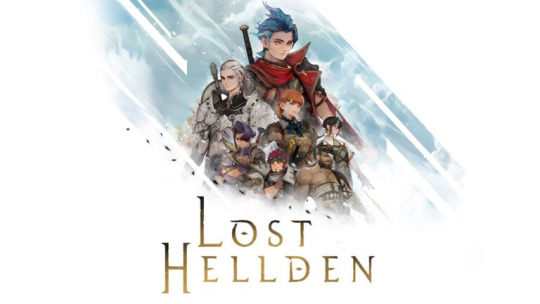
Astria Ascending and Super Neptunia RPG developer Artisan Studios has announced Lost Hellden, a hand-painted Japanese-inspired RPG featuring music and audio direction by Hitoshi Sakimoto (Final Fantasy XII, Tactics Ogre, etc.) and illustrations by Takeshi Oga (Gravity Rush, Siren, etc.). It will launch for PlayStation 5, Xbox Series, PlayStation 4, Switch, and PC via Steam, Epic Games Store, and GOG in 2025.
Here is an overview of the game, via Artisan Studios:
About
Lost Hellden is a unique hand-painted JRPG from Artisan Studios, enhanced by dynamic lighting and weather effects. Take control of eight unique highly customizable characters through an epic mature story where the 7 Deadly Sins guide your fate. Witness a new Deep 2D technology allowing you to play in 3D in hand painted artworks with dynamic lighting and weather. On a planet called Era, people are bound to one of the Seven Deadly Sins before their first birthday via a religious ceremony called the Nexus Ritual. All their life, the inhabitants of Era have to fight against their urges. Should they fail and succumb, they transform into mindless and aggressive beasts. The Unio religion representatives – the Arkhons – ensure that everyone follows the rules and put down any monsters that appear in the cities. One day, a woman gives birth to twins, something that never happened before. The Prime Arkhon, supreme leader of Era, conducts the Nexus Ritual himself. However, something goes wrong, and one baby is bound to all seven sins, while the other receives none. The twins are taken to the capital, Avilah, where they are brought up as Arkhon apprentices. They are never allowed to leave the walls of the sanctuary… But one day, Leht, the twin bound to the seven sins, manages to leave the city. His brother Cyphel is sent on a mission to find and bring him back. He is accompanied by two seasoned Arkhons, Gram and Enki. The journey of Cyphel and Leht is one of self-discovery, one that will allow them to grow and become the people they were destined to be.
Characters
Cyphel Fyrbrand – Since Cyphel was not bound to any Sin during the Nexus Ritual, his childhood was significantly easier than his brother’s. He grew up to be a kindhearted, yet naive young man. Cyphel is usually obedient but he willingly follows Leht when he is up to some mischief.
Gram Stoneheim – This strong woman taught the art of fighting to the twins. She can be harsh sometimes, especially with Leht, because she sees great potential in him. She is an Arkhon and works closely with Enki.
Enki Taillevent – Enki is an Arkhon and a teacher to the twins. He is less strict than Gram, sometimes he can even be seen as lax. His kind demeanor and his sense of humor make him a great person to be around.
More to be announced.
Watch the announcement trailer below. View the first screenshots at the gallery. Visit the official website here.
Announce Trailer
youtube
7 notes
·
View notes
Text
CAI Tools extension for extra features on Character.AI
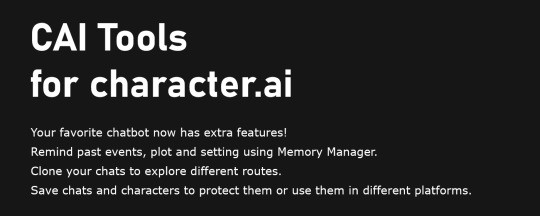
Character.AI has become the go-to platform for millions of users seeking interactive and engaging conversations with AI. Now, this extension brings a range of new features designed to add functionality and customization to your digital interactions. Let’s dive into the specifics and see how CAI Tools is set to give you an even better experience.
Feature Showcase:
1. Clone/Duplicate Your Chat Ever wondered what would happen if you took a different path in your conversation? It’s dilemma, choosing between sacrificing your perfectly tailored chat by deleting messages or starting a new chat from zero. With Character.AI, now you don’t need to choose! Clone your chats to explore different routes and outcomes while completely preserving the current conversation.
2. Extend Memory with Customizable Reminders Create and customize any number of reminders that extend the memory of your AI character. Set important details such as preferences, history and lore. You can even set the frequency of reminder.
3. Save Chats on your PC/Phone Save your chats directly to your PC and read them whenever you want. Especially important when you lose your chats for good. Whether it’s for sentimental reasons or simply to have a back up, CAI Tools lets you do that with just a couple of clicks. You receive your as HTML file, which you can open on browsers and have a good experience reading it.
4. Download Characters in JSON and PNG (Card) Format Character Cards are pretty valuable, because you can use them universally without memorizing or copy pasting each setting one by one. In fact, CAI Tools is used to distribute Character Cards to popular websites like chub.ai, spicychat.ai and more (beware of 18+, though.)
5. Review Hidden Character Settings Ever been curious about the settings of your AI companion? Character.AI lets you see the character settings, even for popular characters that typically have their settings hidden. Unfortunately definitions section may be trully hidden and inaccessible.
6. Download Chats in Various Formats If you want to take your chats to other platforms, you no longer need to copy and paste all your messages. Download your chats in Oobabooga format, Tavern & SillyTavern format that Moemate.io also uses.
7. Chats as definition You liked how the chatbot responds in a specific chat and want the new chats to have the same quality? You can have a definition format of your chat and paste it in the definition setting of your character. Almost too easy.
User interface:
You will get a blue button on top right in chat and history pages. You can get to the menu by clicking on it.
Drag the button with its appendage if you want it elsewhere.
If you don’t need it, you can hide it with three fast taps on the appendage.
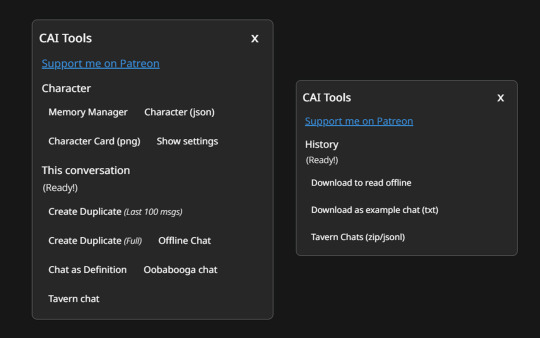
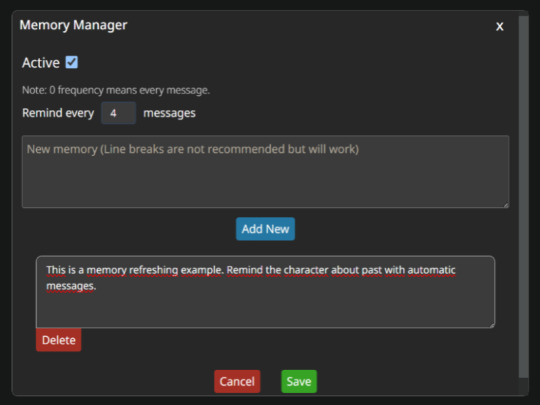
Install:
If you want to have access to all these features, and more in the future, you can find the extension on Chrome Store and Firefox Store.
If you are on mobile, you can use Firefox and install it from Firefox store, or use Kiwi browser to install it from Chrome Store.
Is it secure?
All extensions, be it publish stage or a regular update, are properly reviewed and distributed on the store. This might even take a week.
The extension has a Featured badge, meaning it’s rewarded after a thorough review by Chrome web store team.
Minimal permission request.
The extension is open-source.
2 notes
·
View notes
Text
Every Animator Should Own 4 Instruments
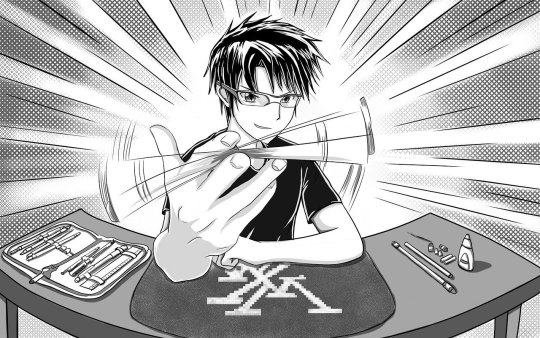
If you're prepared to animate on-screen, check out these 4 essential digital animator tools. We've even offered model suggestions so you can quickly select the equipment that best suits your requirements.With the aid of QuillBot's paraphraser, you can rapidly and effectively rework and rephrase your material by taking your phrases and making adjustments!
1)An image tablet

Using a graphics tablet, you may instantly upload your hand-drawn animations to a computer. They often have a few flat, little buttons. You may view your drawings immediately on certain drawing tablets' displays. Some merely feature a pressure-sensitive pad, which limits you to viewing your drawing on the computer screen.
It takes some getting used to drawing on a graphics tablet, especially if you're used to drawing with a pen and paper. However, they are necessary for digital animators.
Some of the top drawing tablets for digital animation are listed below:
Huion INSPIROY Q11K
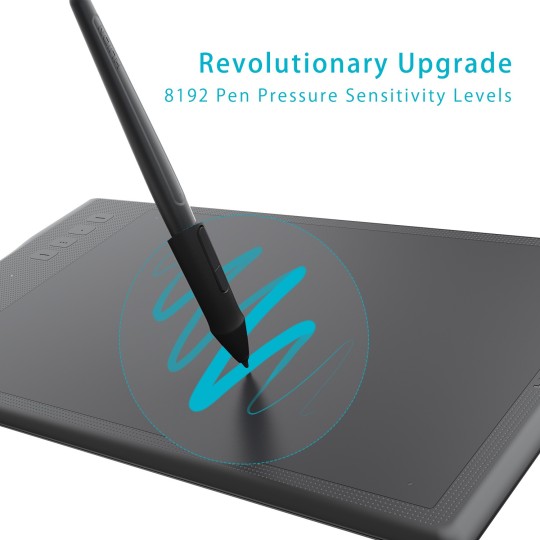
More and more artists, including animators, are moving from traditional art to digital art. Digital animation makes sketching, coloring, painting, masking, etc. easier, compared to traditional animation.
In order to create digital art, physical tools such as a graphics tablet, a PC, and a stylus make the experience much more effective, and great software is essential. But there are so many options for these tools! Which ones are best for you as a digital animator?
If you’re ready to animate on-screen, here are 4 tools every digital animator should have; we’ve even included some model recommendations, so you can easily find the tools that meet your specific needs!
If you’re an animator looking for an affordable drawing tablet, then the Huion INSPIROY Q11K is perfect for you.
It is a wireless tablet, which can work up to 40 hours when fully charged. It has an 11 inch active drawing space and a stylus pen.
Its stylus pen has a stand, which preserves the pen’s battery. The pen has 8,192 pen pressure sensitivity levels and 2 programmable buttons to help you draw easily and comfortably.
The HUION INSPIROY Q11K tablet has 8 customizable express keys, which allow you to quickly access your most used functions without having to interrupt your workflow. It works well on Windows and Mac OS and with photo and graphic editing software.
Gaomon PD1560

source: googel
he Gaomon PD1560 is an affordable, advanced drawing tablet that allows you to see what you’re drawing on the tablet itself.
It makes you feel as if you’re working on an iPad. You will see the image on your PC screen mirrored on your tablet in real-time. It has 10 customizable shortcut keys, 5 menu buttons, and 2 buttons on the pen.
The tablet requires an HDMI and a USB connection to your PC.
It has a 13.5 x 7.6-inch screen size with a 1920 x 1080 resolution, 50/80 LPI resolution, and a pen with 8,192 pen pressure sensitivity levels. Some digital artists find its reflective, glossy screen distracting.
It comes with a 3 in 1 cable, a rechargeable pen, a pen holder, an adjustable stand, and a pen charging cable. It works well on Windows and Mac OS and with photo and graphic editing software.
Wacom Intuos Pro
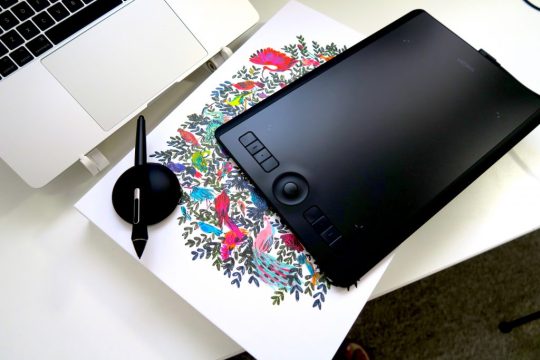
source: google
The greatest drawing tablet for Adobe Photoshop is the Wacom Intuos Pro.
Compared to its predecessor, the Intuos 5, it is both lighter and slimmer. It has a slightly larger drawing area than the Intuos 5, but it also takes up less work space. With the Wacom Intuos Pro, you can even zoom, scroll, and navigate with your fingertips on the surface. It also includes 8 programmable buttons.
The Wacom Intuos Pro pen is battery-free and offers Bluetooth connection, 8,192 pressure sensitivity levels, 2 programmable buttons, and support for natural tilt. With Photoshop and other artistic applications, it functions wonderfully.
Apple iPad Pro 11
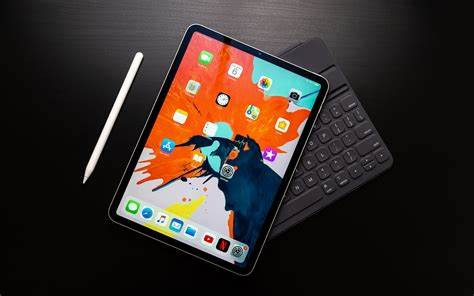
source: google
The Apple iPad Pro 11 inch is one of the best portable drawing tablets.
It can run professional apps like Adobe Photoshop CC and is a great alternative to other drawing tablets if you don't want to sit next to your PC. iPad Pro features a fast A12X Bionic chip that enables advanced machine learning.
The iPad Pro 11-inch has a 10-hour battery life, so you can use it for a long time on the go. It features a Liquid Retina display with true-to-life colors, and promotional technology makes everything on the screen look responsive.
Wacom Cintiq 22

source: google.com
The Wacom Cintiq 22 comes with a large drawing area and a 1080p full HD screen. It has an anti-glare glass surface that makes you feel like you’re drawing on paper. It also has an adjustable stand with a wide tilt range for your comfort.
Its pen has 2 programmable buttons, and offers 8,192 pressure sensitivity, and tilt sensitivity. The pen doesn’t need any battery or charging since it takes power from the screen’s electromagnetic properties
2) A Stylus Pen
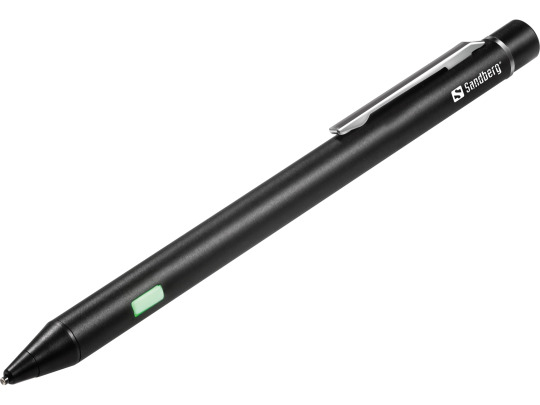
source: google.com
Animators can always start drawing on paper or whatever medium they like, but at some point they will need to draw on the computer. A stylus pen makes this process much easier.
A stylus pen gives you more precise control over your drawing tablet. A must have if you need to write or draw on your tablet. observation: It can take some getting used to using both the stylus and tablet. When looking for a good stylus, you should consider the tip, the part of the stylus that touches the tablet screen. Tips may be retractable, capped, fixed, or unprotected. It's also important to consider the entire pen. Some have Bluetooth connectivity, and battery capacity and pressure sensitivity vary by pen.
Make sure you buy a pen with a firm grip. The weight is well distributed and it doesn't need to be too big or too thick. Most importantly, it is convenient for frequent and long-term use.
If your drawing pad didn't come with a pen, or you're in need of an upgrade, below are some of the best stylus he pens available. Make sure the pen you buy is compatible with your drawing tablet.
Apple Pencil 2nd Generation

source: google.com
The side of the 2nd Generation Apple Pencil’s tip allows you to make wider strokes, which can be incredibly helpful when shading.
It clips magnetically to the side of your iPad Pro, where you can recharge it wirelessly.
Take note: The 2nd generation Apple Pencil only works with the 2018 iPad Pro models and above.
Wacom Bamboo Sketch
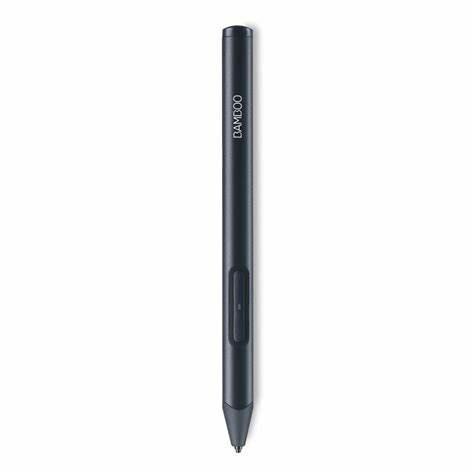
The Wacom Bamboo Sketch is a stylus designed for sketching on the iPad and the iPhone.
It works well with the 9.7-inch and 12.9-inch iPad Pro, 3rd and 4th-generation iPads, the iPad Air, the iPad Air 2, the iPad mini, and the iPhone models, starting from iPhone 6.
It connects to your device via Bluetooth and has a pressure-sensitive tip. It has two customizable buttons for output control and exchangeable pen nibs.
You can integrate the pen with apps such as Bamboo Paper, ArtRage, Autodesk SketchBook, Concepts, and Tayasui Sketches.
Adobe Ink and & Slide
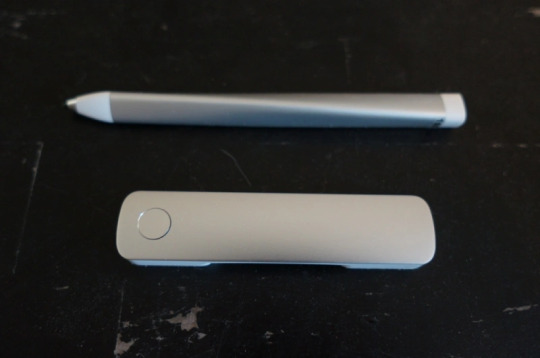
The Adobe Ink & Slide stylus comes with a carrying case and a USB charger. It has a fine tip and a pressure-sensitive point.
Uniquely, this stylus shows you what color you chose, and the Slide ruler can be used to make perfectly straight lines and other shapes.
Adobe Ink & Slide can be connected to any iPad 4 or later, iPad Air, and iPad mini via Bluetooth LE. It also automatically syncs with Creative Cloud, so you can easily store your drawings and access them on your computer later.
3) A Fast PC

Every digital artist needs a PC with a fast processor. The more RAM and disk memory, the better. Requires 8-16 GB RAM, 256 GB hard drive, and at least an Intel Core 2 or AMD Athlon 64 processor.
If your PC is slowing down, you can increase your PC's RAM to its maximum capacity. You can even upgrade your hard drive and use an external drive to back up your work. This speeds up work, especially when dealing with large files.
Below we list some of the best laptops and tablets for animators. These devices are characterized by their performance and the use of pen displays. Consider your specific needs when browsing these options. budget, portability of the device, etc.
Microsoft Surface Pro 7

Microsoft Surface Book

Lenovo Yoga 920
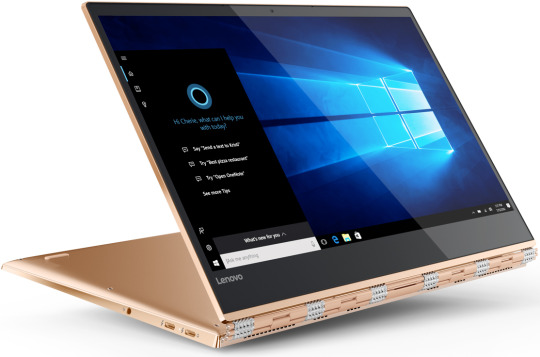
Lenovo Yoga Book
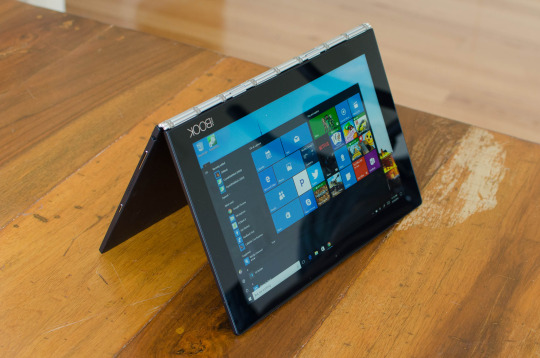
Samsung Notebook 9 Pro
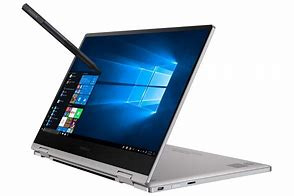
Apple iPad Pro
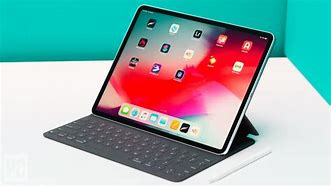
Apple MacBook Pro

4) Software:
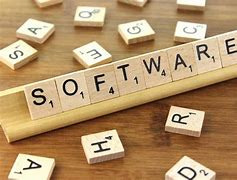
There are a variety of free and paid options for animation software. Free software can be much more accessible, but paid software often provides extra benefits like continuous product support, compatibility, updates, and security.
Wrapping Up The 4 Tools Every Animator Should Own
You may not always have the latest and greatest equipment, but it’s important to know what graphics tablet, stylus pen, hardware, and software will work best for you and your animation needs.
Knowing what tools to use and when and how to use them, is part of every animator’s learning process. The more experiences you have and the more research you do, the more you’ll know about the best equipment to use and which features you need and prefer.
Remember there are no wrong or right choices when it comes to buying equipment for animation. You just have to find the perfect equipment that suits your needs, budget, and taste. And if you don’t really know yet what works best for you, that’s okay--you’ll learn as you practice with and use your new tools.
If you’re looking for resources that will help develop your business and animation skills as a freelance animator, you came to the right place! Download our free marketing handbook and join our free masterclass.
2 notes
·
View notes
Text
Reliable Metal Hardness Testing with Suzuki Instruments’ Brinell Testers
When it comes to testing the mechanical strength of metals, especially in heavy industries like manufacturing, construction, and automotive, precision and reliability are critical. One of the most trusted and time-tested methods of evaluating the hardness of materials is the Brinell Hardness Test. At the forefront of supplying state-of-the-art Brinell Hardness Testers in India is Suzuki Instruments, a renowned industrial equipment supplier based in Mumbai, Maharashtra.
Suzuki Instruments has carved a niche in the Indian market by offering a range of high-performance hardness testing machines that meet both national and international quality standards. Their focus on accuracy, durability, and innovation is evident in their diverse lineup of Brinell Hardness Testers — from manual to fully computerized automatic models.
Why Brinell Hardness Testing?
Before diving into the product range, it’s important to understand why Brinell hardness testing remains one of the most reliable methods in the industry.
The Brinell Hardness Test is primarily used for materials with coarse or uneven surfaces, such as castings and forgings. It involves pressing a hardened steel or carbide ball into the material under a specific load and measuring the diameter of the indentation left behind. This test is widely used for its:
Simplicity and ease of operation
Non-destructive nature, preserving material integrity
Repeatability and reliability across a variety of materials
Suitability for large metal specimens
The Suzuki Instruments Advantage
Operating from the industrial hub of Mumbai, Suzuki Instruments offers a comprehensive range of Brinell Hardness Testers to meet the varied needs of their clients. Whether you’re a workshop testing raw materials or a high-end lab working with precision components, there’s a machine tailored to your requirements.
Let’s explore their Brinell tester models:
1. Brinell Hardness Testers Model: B3000 (H)
This is a hydraulic-operated manual model ideal for industries looking for a dependable and cost-effective solution. The B3000 (H) is known for its robust construction and long-term durability.
Key Features:
Hydraulic loading system
Manual operation, making it economical and simple to use
Ideal for large castings and rough-surfaced samples
2. Brinell Hardness Testers Model: B3000 (O)
This model offers optical measurement, providing more precise readings than manual versions. It’s suitable for users looking for a balance between cost-efficiency and advanced features.
Key Features:
Optical system for improved accuracy
Rugged design
Suitable for labs and inspection departments
3. Computerised Brinell Hardness Testers Model: B3000-PC
This version introduces digital data processing and computerized control, making it suitable for high-volume environments where accuracy and traceability are essential.
Key Features:
Fully computerized with digital display
Direct measurement of indentation
Data storage and export capability for quality control
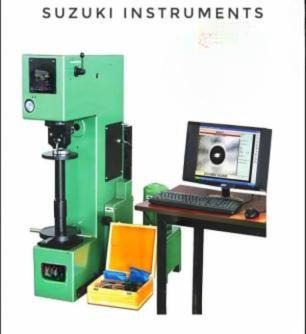
4. Computerised Fully Automatic Brinell Hardness Testers Model: B3000-PC-FA
A step further in automation, this model offers a fully automatic cycle — from loading to measurement and data recording — significantly reducing human error and testing time.
Key Features:
Automatic load application and removal
Software-based measurement and analysis
Ideal for repetitive testing and QA processes
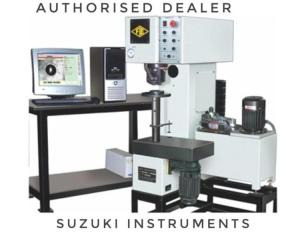
5. Computerised Fully Automatic Brinell Hardness Testers Model: B-3000 TFSA
This model incorporates touchscreen operation and smart automation, giving users an intuitive interface and advanced features suitable for modern testing environments.
Key Features:
Touchscreen interface for easy operation
High-resolution camera for optical measurement
Real-time test data monitoring and analysis
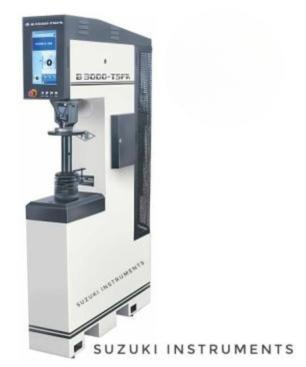
6. Computerised Fully Automatic Brinell Hardness Testers Model: B-3000 TS
Similar to the TFSA, but with customizable automation features, this model provides flexibility in industrial environments where different materials and shapes are frequently tested.
Key Features:
Modular and customizable configuration
High throughput with minimal manual intervention
Suitable for R&D centers and heavy-duty production lines
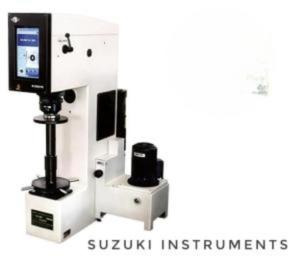
Commitment to Quality and Support
Suzuki Instruments not only provides high-quality machinery but also backs their products with excellent customer support, technical training, and after-sales service. This commitment ensures that clients achieve maximum efficiency and uptime from their investment.
With rigorous in-house testing and adherence to ISO and BIS standards, every Brinell Hardness Tester delivered by Suzuki Instruments is a testament to quality engineering and precision manufacturing.
As material engineering continues to evolve, so does the need for accurate, reliable, and efficient testing equipment. Suzuki Instruments, with its wide array of Brinell Hardness Testers, stands as a dependable partner for industries across India.
Whether you’re a large manufacturer, a metallurgical lab, or a quality assurance specialist, Suzuki Instruments’ Brinell testing solutions ensure accurate results, operational efficiency, and long-term reliability — helping you uphold the highest standards in material testing.
For more information or to request a quote, reach out to Suzuki Instruments today and experience the precision that defines their brand.
0 notes